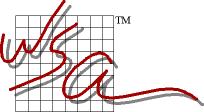ODS - The Organizational MRI |
||
ODS Articles
|
Features that Appeal to an Executive:How the ODS strengthens the Executive OfficeExecutives find the ODS strengthens the ability of the executive team to lead the organization more effectively. Just as financial statements are critical to executive success, measuring the human side of enterprise is a key executive tool. The more the executive team wants to improve the capacity of the organization to perform, the more valuable the ODS. The ODS helps executives:
|
|
Hard Meaningful Measures
|
||
Details |
||
ODS Information Valuable to an Executive.
It reveals the following:1. Why the organization is not as responsive as he/she would like
2. The inner workings of the organization to identify where it is not functioning properly. Like an MRI informs a trained physician what is happening in a patient the ODS can do the same for a human enterprise.
3. The view of the organization from an employee’s perspective.
4. How people enjoy their work. The ODS enables executives to get the answers to questions they could not ask without distorting the answer. For example Q 15 asks “I enjoy my work”. Any CEO who asks an employee “Do you enjoy your work” will likely get a distorted answer. The anonymity provided by the ODS enables an employee to answer truthfully.
6. The gap between what the Senior Executives believe is happening and what the Managers and Individuals state is really happening.
7. Where investing in organizational development will provide the best return by leveraging the existing strengths of the organization.
8. Where the company is relative to what other companies have achieved. The ODS provides a benchmark and an average from our database of over 130 companies and 20,000 individuals who have taken the ODS over the years.
9. Where the organization is today, thereby creating a baseline for any changes the executive team may wish to introduce to measure progress.
10 What aspects of the company’s culture the team can leverage when a change is needed. It will also provide information about how to get the quickest return on investment (low hanging fruit) for any change initiative.
11. The organization’s response to 31 action items clearly enables executives to see and discuss the actual “data” rather than their own “opinions” about what changes need to be made.
12. Differences in the performance of departments or divisions where one group is doing better than another group for no apparent reason. The ODS will create a well informed dialogue with the senior team if a department by department survey is done allowing cross company comparison.
13. Provide the executive team to give the workforce the feedback that their voices and opinions have been heard and at the same time signal the company is planning to change culture.
14. Pointing out potential roadblocks when contemplating a culture change so that action can be taken to deal with them before the change is launched.
15. Provides a snapshot of how your organization is functioning at three levels:
- Individual Contributors offer their viewpoint and attitude
- Managers offer their perceptions separately
- Executives get a reality check on their beliefs - what they think is going on
16. A report card on the multiple performance dimensions of the organization:
- Middle management leadership
- Training programs in place
- Employee appraisal system
- Compensation and Bonus programs.
- And lots more
